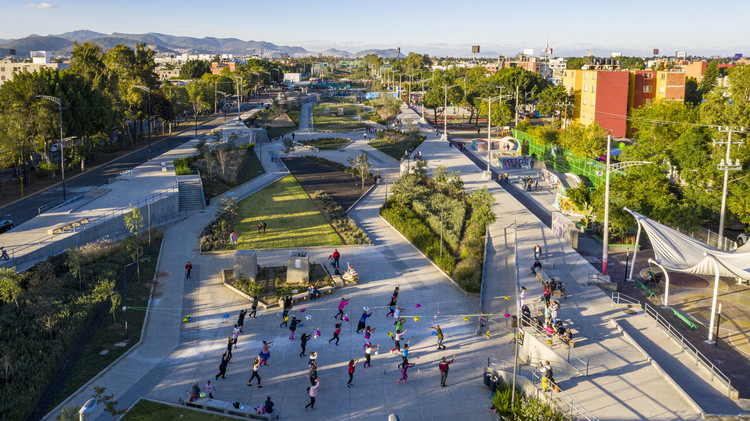
You may have heard an architect colleague say that he chose to study architecture because of the numerous possibilities of action that this degree allows. The field of architecture is, in fact, very extensive, through which it is possible to embark not only on the most “traditional” attributions, but also to venture into various specificities that comprehend the role of the architect and urban planner.
In many countries, the architecture activity is still closely linked to engineering. An example of this is Brazil, which only in 2012 created an independent council to regulate the profession. The practice, however, is much broader and involves different activities that deal with the spatial issue from very different scales, approaches and intentions.
Discover 9 areas of activity beyond architectural and interior design.
1. Environment: Study and Evaluation of Environmental Impacts
In the midst of an unprecedented environmental crisis, many disciplines have been poring over the latest sustainability guidelines. Architecture, of course, is not outside of this, and this playing field for architects is more in vogue than ever. Through it, we are accredited to evaluate environmental impacts, elaborate licenses, as well as develop guidelines for the rational use of available resources towards sustainable development.

2. Materials: Technology, Strength and Pathologies
As with the above-mentioned attribution, materials technology has been evolving at exorbitant standards, also driven by the climate urgency we are experiencing. However, in addition to the study of vernacular materials and the development of new ones, this attribution also covers the possibility of attesting to pathology reports and recovery of existing buildings, such as developing safety tests on certain materials.


3. Landscaping: Design and Execution of External Areas
This is perhaps one of the fields of activity best known by architects, considering great exponents of landscape architecture such as Roberto Burle Marx (despite having the title of visual artist) or more contemporary professionals such as Alex Hanazaki. The landscaping incorporated within the architecture goes through different scales, from private gardens to large public spaces, such as squares and parks, reaching even the territorial dimension. A path full of opportunities in view of the recent resumption of the importance of contact with nature stimulated mainly by the pandemic.


4. Urban and Regional Planning: From the Layout of Cities to Infrastructure Systems
Following the line of landscaping, urban planning deals with intervention plans in public space, however, based on infrastructure systems, basic and environmental sanitation, road system, signaling, mobility, accessibility, among others. Besides, this item is responsible for the services of land subdivision, subdivision, dismemberment, street layout, as well as the elaboration of the master plan and layout of the cities.


5. Topography: Data Development and Analysis
This is an activity, in most cases, undertaken by professionals other than architects, however, it is worth mentioning that we are able to prepare and interpret topographic and cadastral surveys, including data analysis and remote sensing. Despite being understood as secondary, topographic analysis is essential for any project, regardless of scale, and when well studied and understood, it can become a great ally in intelligent design solutions.

6. Environmental Comfort: Acoustic, Lighting and Ergonomics Projects
Environmental comfort refers to the search for the maximum possible satisfaction of users in the environment, including the study of climatic conditions, acoustics, luminosity, energy consumption and reduction of pollutant emissions. In this sense, this assignment addresses different aspects that influence the user's well-being, also relating to contemporary issues such as green certifications and the biophilia of spaces.

7. Construction Systems: Development and Technological Application of Structures
This field concerns the development of structures including design and execution. Although the validity of this attribution varies in scale according to the location, architects can be responsible for the structural design of a building, especially when there is a specialization focused on this area.

8. Facilities and Equipment: Complementary Projects
The same goes for this item. Contrary to what is heard, there is no legal information about the area limit for the elaboration of so-called complementary projects - such as hydrosanitary and electrical - for architects, only for building technicians. However, regardless of the scale allowed, being able to offer complementary projects is also part of the architect's attributions.

9. Heritage: Project Practices and Technological Solutions
The field related to heritage is also one of the best known among architects, as it explores different paths such as historical, cultural, artistic, architectural, urban and landscape heritage. In addition, it works with restoration, design practices and technological solutions for reuse, rehabilitation, reconstruction, preservation, conservation, restoration and enhancement of buildings, complexes and cities.

This article is part of ArchDaily Topics: Architecture Without Buildings. Monthly, we explore a specific topic through articles, interviews, news and projects. Learn more about ArchDaily topics. As always, ArchDaily is open to contributions from our readers; if you want to submit an article or project, please contact us.


















